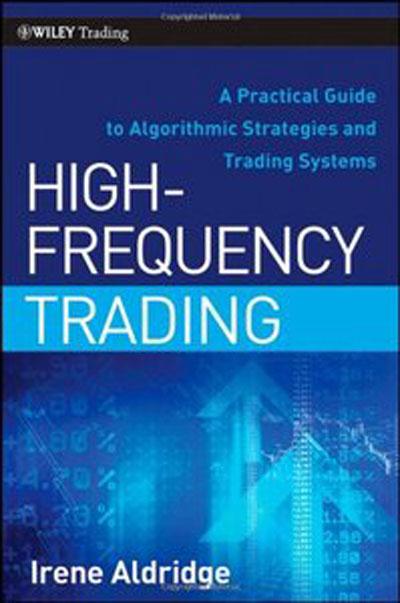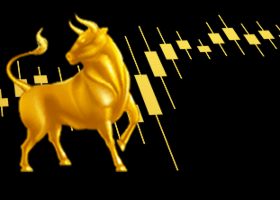
Something to Read - Off Topic Interview with Irene Aldridge and her Book 'High-Frequency Trading: A Practical Guide to Algorithmic Strategies'
Alpha Pages: You took great issue with Michael Lewis’ claim that the market is “rigged.” Why?

Irene Aldridge: On the Michael Lewis topic, I suppose I am most disappointed in the pay-for-play quality of the book. Even the fastest best-selling writers can tell you that they are only capable of writing 15 pages per day, at best. To write a 300-page book, [is] a five-month process, at a bare minimum.
Incidentally, at the time Mr. Lewis’s book was released, the trading venue around which much of the book revolves, has been in existence for, wait for it, exactly five months! In other words, Mr. Lewis began to write the novel about his great protagonists and its creation prior to the launch of this trading venue at the center of this book—I really don’t see how he could have covered this in depth. [It appears to be an] elaborate marketing campaign for this trading venue. In other words, the book is marketing masquerading as a fair markets discourse. For a writer like Lewis, stooping so low is a complete disgrace. Markets have moved a long way toward fairness since then, so most of his criticism is completely unfounded.
AP: Is high frequency trading taking the heat for problems caused market structure or regulations?
IA: From what we are seeing, this HFT pre-hedging that boils down to front-running [may have] unfortunately become common practice following the Volcker and Dodd-Frank rules. There still exists a FINRA rule that encourages brokers to avoid front-running, but FINRA is a self-regulatory organization, and the consequences of not following its rules [may not be so harsh]. While most of ABLE Alpha clients have the permission to access the markets directly and, as a result, avoid front-running, many smaller entities are not so lucky and end up losing money. I do not believe that this is what the regulators had in mind when they designed the laws, but these are the unintended consequences.
AP: There is an ongoing argument over whether HFT is a net liquidity maker or taker as opposed to traditional market makers?
IA: I was just presenting at the Princeton Quant Trading conference, where a fellow speaker, [from a] prominent broker discussed how they are forced to spend money to build systems that monitor the number of zeroes human brokers put at the end of their orders simply because brokers so often come to work hung over and unable to focus. Well, needless to say, hangovers do not happen to computers. Overall, the computers are considerably cheaper, more reliable and less demanding than human brokers, so there is absolutely no doubt in my mind that the computerized trading technology, known as HFT, will replace most of the presently-human trading operation at brokers in continuing the digital revolution observed elsewhere in the society.
AP: Will the size of HFT be self-correcting? Will algorithms exploit inefficiencies until they’re gone?
One of our products is the HFT Index, science, not hear-say, based [on a] real-time estimate of aggressive HFT participation in electronic markets of customer choice. According to our estimates, activity level of aggressive HFTs by volume averages 15% to 20% in most markets, although intraday it may spike up 100%, or drop to 0%.
According to the HFT Index, many highly liquid securities have the lowest HFT participation as a percent of overall volume, seldom exceeding 15%, while some other instruments are dominated by the aggressive HFTs. Painting the entire market with a wide 50% HFT brush gives little insight into what we and our clients are actually seeing.The Book
High-Frequency Trading: A Practical Guide to Algorithmic Strategies and Trading Systems By Irene Aldridge

Financial markets are undergoing rapid innovation due to the continuing proliferation of computer power and algorithms. These developments have created a new investment discipline called high-frequency trading. Despite the demand for information on this topic, little has been published to help investors understand and implement high-frequency trading systems—until now.
Written by industry expert Irene Aldridge, High-Frequency Trading offers the first applied "how to do it" manual to building high-frequency systems.Covering sufficient depths of material to thoroughly pinpoint issues at hand, High-Frequency Trading leaves mathematical complexities to their original publications, referenced throughout the book.
Page by page, this accessible guide:
- Discusses the history and business environment of high-frequency trading systems
- Reviews the statistical and econometric foundations of the common types of high-frequency strategies
- Examines the details of modeling high-frequency trading strategies
- Describes the steps required to build a quality high-frequency trading system
- Addresses the issues of running, monitoring, and benchmarking high-frequency trading systems
Along the way, this reliable resource skillfully high-lights numerous quantitative trading strategies—from market microstructure and event arbitrage to deviations arbitrage—and puts the creation and management of portfolios based on high-frequency strategies in perspective.
High-frequency trading is a difficult, but profitable, endeavor that can generate stable profits in various market conditions. But solid footing in both the theory and practice of this discipline are essential to success. Whether you're an institutional investor seeking a better understanding of high-frequency operations or an individual investor looking for a new way to trade, this book has what you need to make the most of your time in today's dynamic markets.


